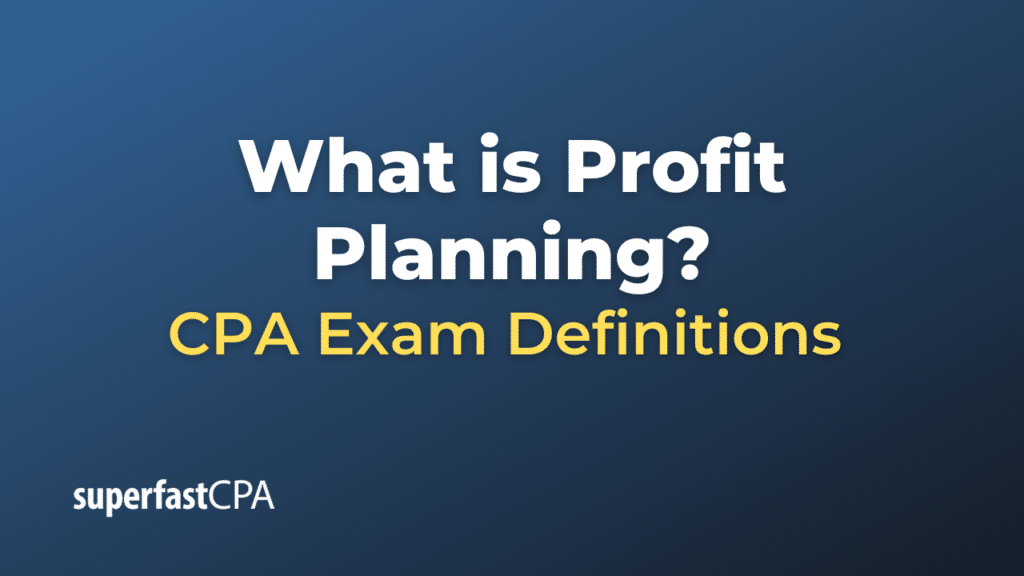Profit Planning
Profit planning is a critical part of financial management that involves planning and managing a company’s profit to achieve its financial objectives. It’s a process where the management of a company devises strategies and makes decisions to generate the maximum possible profit.
The process involves several steps, which typically include:
- Setting profit Goals: The first step in profit planning is setting a profit goal. This should be in line with the company’s strategic goals and the expectations of its shareholders.
- Analysis of Revenue and Costs: This involves analyzing the company’s revenue and costs. This can include a review of pricing strategies, cost control measures, and the profitability of different product lines or business segments.
- Budgeting: Based on the analysis of revenue and costs, the company can then set budgets for different departments or areas of the business. This includes both revenue targets and limits on expenditure.
- Monitoring and Review: Once the plan has been put into action, it’s essential to monitor progress against the plan and adjust it as necessary. This might involve tracking actual revenue and expenses against the budget, and then taking corrective action if there are significant variances.
Profit planning can help a company to make better decisions, allocate resources more effectively, and ultimately achieve its financial objectives. It requires a good understanding of the company’s business model, market conditions, and financial performance. It’s a continuous process that needs to be reviewed and updated regularly to reflect changes in the business environment and the company’s strategic goals.
Example of Profit Planning
Let’s consider a simplified example of profit planning for a fictitious company, “Healthy Bites,” that sells organic snack products.
- Setting Profit Goals: At the start of the fiscal year, Healthy Bites sets a profit goal of $500,000 for the upcoming year, a 20% increase compared to last year, in line with their strategic growth objectives.
- Analysis of Revenue and Costs: The management performs a thorough analysis of the company’s revenue streams and costs. They identify that one of their snack products is significantly more profitable than others. They also find that their costs of production have increased due to rising prices of some organic ingredients.
- Budgeting: Based on their analysis, they decide to increase the production and marketing of their most profitable product. To manage rising production costs, they decide to negotiate better deals with their suppliers and find ways to improve operational efficiency. They create a detailed budget for each department, specifying how much each can spend and what revenues are expected.
- Monitoring and Review: As the year progresses, they monitor sales, costs, and profit margins closely. Halfway through the year, they notice that their most profitable product’s sales are not growing as expected. In response, they decide to increase their marketing efforts and adjust their plan to focus on promoting this product more aggressively.
This example illustrates the ongoing nature of profit planning. It’s not a “set and forget” process, but something that needs continuous monitoring and adjustment as circumstances change.













